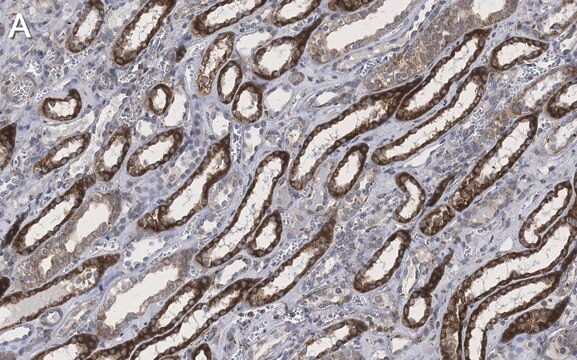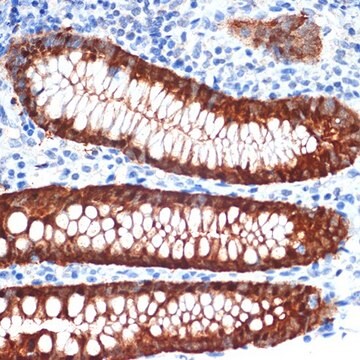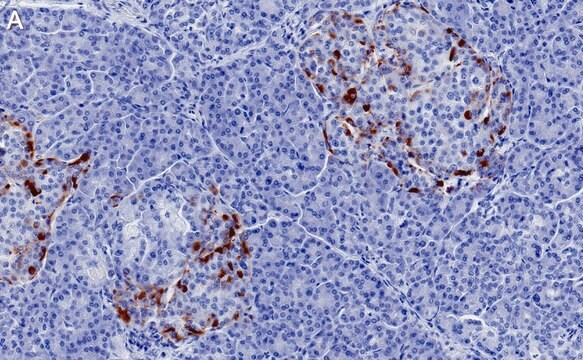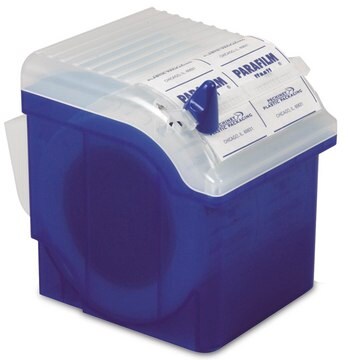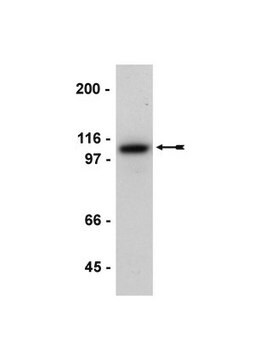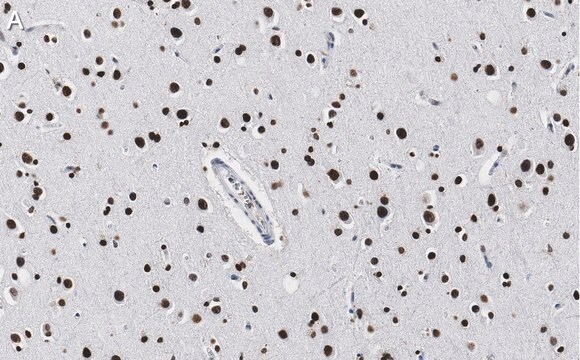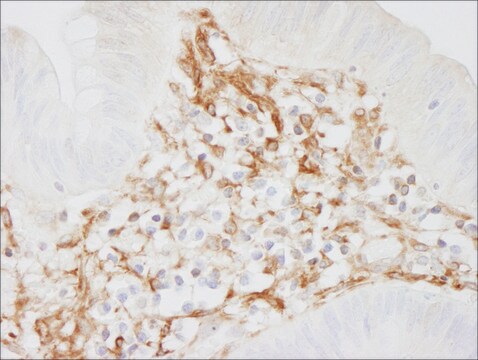一般說明
We are committed to bringing you greener alternative products, which adhere to one or more of The 12 Principles of Green Chemistry.This antibody is Preservative-free, produced without the harm or sacrifice of animals and exceptionally stable to allow for ambient shipping and storage if needed and thus aligns with "Waste Prevention", "Designing Safer Chemicals" and "Design for Energy Efficiency".
Click here for more information.
ZooMAb
® antibodies represent an entirely new generation of recombinant monoclonal antibodies.
Each ZooMAb
® antibody is manufactured using our proprietary recombinant expression system, purified to homogeneity, and precisely dispensed to produce robust and highly reproducible lot-to-lot consistency. Only top-performing clones are released for use by researchers. Each antibody is validated for high specificity and affinity across multiple applications, including its most commonly used application. ZooMAb
® antibodies are reliably available and ready to ship when you need them.
Learn more about ZooMAb here.特異性
Clone 1D13 is a ZooMAb® mouse recombinant monoclonal antibody that specifically detects Nuclear receptor ROR g. It targets an epitope within the N-terminal half.
免疫原
His-tagged recombinant fragment corresponding to 138 amino acids from the N-terminal half of human Nuclear receptor ROR g.
應用
Quality Control Testing
Evaluated by Western Blotting in Jurkat cell lysate.
Western Blotting Analysis: A 1:10,000 dilution of this antibody detected ROR g in Jurkat cell lysate.
Tested applications
Western Blotting Analysis: A 1:10,000 dilution from a representative lot detected ROR g in mouse kidney and HepG2 cell lysates.
Flow Cytometry Analysis: 0.1 μg from a representative lot detected ROR g in one million Human peripheral blood mononuclear cells (PBMC).
Immunohistochemistry (Paraffin) Analysis: A 1:100 dilution from a representative lot detected ROR g in human liver tissue sections.
Immunocytochemistry Analysis: A 1:100-1,000 dilution from a representative lot detected ROR g in HeLa and Jurkat cells.
Affinity Binding Assay: A representative lot of this antibody bound ROR g with a KD of 1.0 x 10-12 in an affinity binding assay.
Note: Actual optimal working dilutions must be determined by end user as specimens, and experimental conditions may vary with the end user
Anti-RORg, clone 1D13 ZooMAb®, Cat. No. ZRB1398, is a recombinant Rabbit monoclonal antibody that specifically targets RORg and is tested for use in Affinity Binding Assay, Immunocytochemistry, Immunohistochemistry (Paraffin), and Western Blotting.
標靶描述
Nuclear receptor RORg (UniProt: P51449; also known as Nuclear receptor RZR-gamma, Nuclear receptor subfamily 1 group F member 3, RAR-related orphan receptor C, Retinoid-related orphan receptor-gamma) is encoded by the RORC (also known as NR1F3, RORG, RZRG) gene (Gene ID: 6097) in human. RORg is a nuclear receptor that binds as a monomer to ROR response elements (RORE) containing a single core motif half-site 5′-AGGTCA-3′ preceded by a short A-T-rich sequence. It is a key regulator of cellular differentiation, immunity, peripheral circadian rhythm as well as lipid, steroid, xenobiotics and glucose metabolism. It is considered to have intrinsic transcriptional activity and also has some natural ligands like oxysterols that act as agonists (25-hydroxycholesterol) or inverse agonists (7-oxygenated sterols), enhancing or repressing the transcriptional activity, respectively. It is reported to recruit distinct combinations of cofactors to target gene regulatory regions to modulate their transcriptional expression, depending on the tissue, time, and promoter contexts. RORg also regulates the circadian expression of clock genes such as CRY1, ARNTL/BMAL1 and NR1D1 in peripheral tissues and in a tissue-selective manner. It negatively regulates adipocyte differentiation through the regulation of early phase gene expression. Two isoforms of ROR g have been described that are produced by alternative promoter usage. Isoform 1 is widely expressed in many tissues, including liver and adipose, and highly expressed in skeletal muscle whereas isoform 2 is primarily expressed in immature thymocytes. This ZooMAb® recombinant monoclonal antibody, generated by our propriety technology, offers significantly enhanced specificity, affinity, reproducibility, and stability over conventional monoclonals.
外觀
Purified recombinant rabbit monoclonal antibody IgG, lyophilized in PBS with 5% Trehalose, normal appearance a coarse or translucent resin. The PBS/trehalose components in the ZooMAb formulation can have the appearance of a semi-solid (bead like gel) after lyophilization. This is a normal phenomenon. Please follow the recommended reconstitution procedure in the data sheet to dissolve the semi-solid, bead-like, gel-appearing material. The resulting antibody solution is completely stable and functional as proven by full functional testing. Contains no biocide or preservatives, such as azide, or any animal by-products. Larger pack sizes provided as multiples of 25 μL.
重構
300 μg/mL after reconstitution at 25 μL per vial. Please refer to guidance on suggested starting dilutions and/or titers per application and sample type.
儲存和穩定性
Recommend storage of lyophilized product at 2-8°C; Before reconstitution, micro-centrifuge vials briefly to spin down material to bottom of the vial; Reconstitute each vial by adding 25 μL of filtered lab grade water or PBS; Reconstituted antibodies can be stored at 2-8°C, or -20°C for long term storage. Avoid repeated freeze-thaws.
法律資訊
ZooMAb is a registered trademark of Merck KGaA, Darmstadt, Germany
免責聲明
Unless otherwise stated in our catalog or other company documentation accompanying the product(s), our products are intended for research use only and are not to be used for any other purpose, which includes but is not limited to, unauthorized commercial uses, in vitro diagnostic uses, ex vivo or in vivo therapeutic uses or any type of consumption or application to humans or animals.

